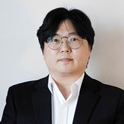New Challenges in Building Acoustics
A special issue of Applied Sciences (ISSN 2076-3417). This special issue belongs to the section "Civil Engineering".
Deadline for manuscript submissions: closed (31 December 2022) | Viewed by 8279
Special Issue Editors
Interests: architectural acoustics; building acoustics; room acoustics; acoustical design; public space acoustics; acoustic scale modeling
Special Issues, Collections and Topics in MDPI journals
Special Issue Information
Dear Colleagues,
Modern building acoustics have advanced over the past 150 years since the field was founded by W. C. Sabine. It developed mainly according to modern science and technology based on the Third Industrial Revolution. However, we are currently facing the Fourth Industrial Revolution in smart cities, with a fusion of artificial intelligence, robotics, the Internet of Things, genetic engineering and more. Furthermore, rapid urbanization with dense populations and high-speed transportation increases complex noise sources both indoors and outdoors of buildings. On the other hand, the demand for better acoustic built environments is also increasing, along with the improved quality of life.
In this context, new challenges including the convergence of cutting-edge technologies and multi-disciplinary research are required to solve difficult problems and to promote acoustical comfort in building acoustics. This Special Issue focuses on all innovative aspects of building acoustics.
All contributions on building acoustics regarding recent experiences, case studies, or scientific evidence obtained through both methodological and technical approaches will be considered. This collection of papers aims to create a background of good practices as well as a reference for municipalities and anyone studying future building acoustics.
Dr. Yong Hee Kim
Dr. Jun Oh Yeon
Guest Editors
Manuscript Submission Information
Manuscripts should be submitted online at www.mdpi.com by registering and logging in to this website. Once you are registered, click here to go to the submission form. Manuscripts can be submitted until the deadline. All submissions that pass pre-check are peer-reviewed. Accepted papers will be published continuously in the journal (as soon as accepted) and will be listed together on the special issue website. Research articles, review articles as well as short communications are invited. For planned papers, a title and short abstract (about 100 words) can be sent to the Editorial Office for announcement on this website.
Submitted manuscripts should not have been published previously, nor be under consideration for publication elsewhere (except conference proceedings papers). All manuscripts are thoroughly refereed through a single-blind peer-review process. A guide for authors and other relevant information for submission of manuscripts is available on the Instructions for Authors page. Applied Sciences is an international peer-reviewed open access semimonthly journal published by MDPI.
Please visit the Instructions for Authors page before submitting a manuscript. The Article Processing Charge (APC) for publication in this open access journal is 2400 CHF (Swiss Francs). Submitted papers should be well formatted and use good English. Authors may use MDPI's English editing service prior to publication or during author revisions.
Keywords
- building acoustics
- architectural acoustics
- acoustical modeling
- acoustical measurement
- sound source identification
- noise reduction devices
- vibration control
- room acoustic design
- indoor soundscape
- acoustic comfort of residents
Benefits of Publishing in a Special Issue
- Ease of navigation: Grouping papers by topic helps scholars navigate broad scope journals more efficiently.
- Greater discoverability: Special Issues support the reach and impact of scientific research. Articles in Special Issues are more discoverable and cited more frequently.
- Expansion of research network: Special Issues facilitate connections among authors, fostering scientific collaborations.
- External promotion: Articles in Special Issues are often promoted through the journal's social media, increasing their visibility.
- Reprint: MDPI Books provides the opportunity to republish successful Special Issues in book format, both online and in print.
Further information on MDPI's Special Issue policies can be found here.






